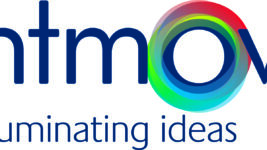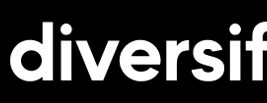PEOPLE
26 Mar 2024
DVOX – Audio for the People
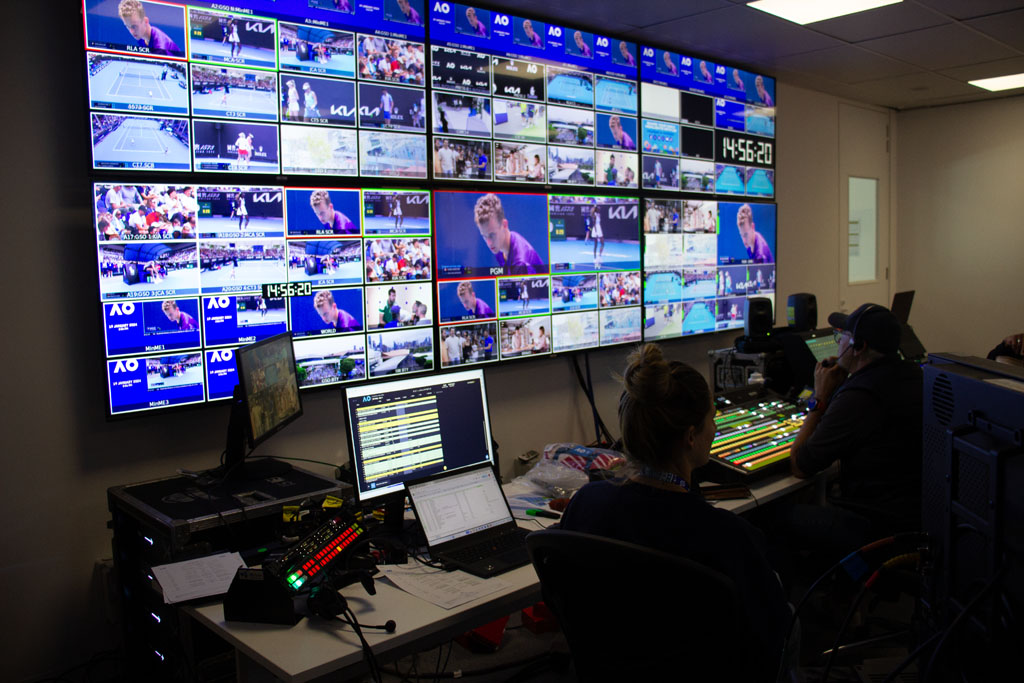
Subscribe to CX E-News
It’s always great to be able to go to The Australian Open tennis and call it ‘work’. Held at Melbourne’s Olympic Park precinct from Jan 7 to 28 2024, it’s a great vibe hanging around outside on a sunny day, even if you never see a ball hit. There are bands, food, drink, big LED screens relaying games, and hundreds of deck chairs. It’s entirely possible to have a great time without getting an expensive seat courtside.
It’s those many LED screens relaying live matches that require an audio solution. Having a PA with sufficient volume to cover each of their viewing areas would create noise havoc and total incomprehensibility. The screens do have a couple of small speakers on the sides, but they run at low volume, and you need to be within a couple of metres to understand them. Many solutions exist to give people personal assisted listening devices to tune into the screen broadcast via headphones, but they require either a lot of equipment and people to run it, are digital solutions that don’t scale, or are clumsy, app-based, and too laggy.
AO StartUps is part of the Tennis Australia innovation and venture capital strategy. Founded in 2022, it selects creative technology startups and gives them the opportunity to crack the global sport, events and entertainment markets by piloting their technology at the AO and within other areas of Tennis Australia’s business. Canadian start-up DVOX was one of those selected companies.
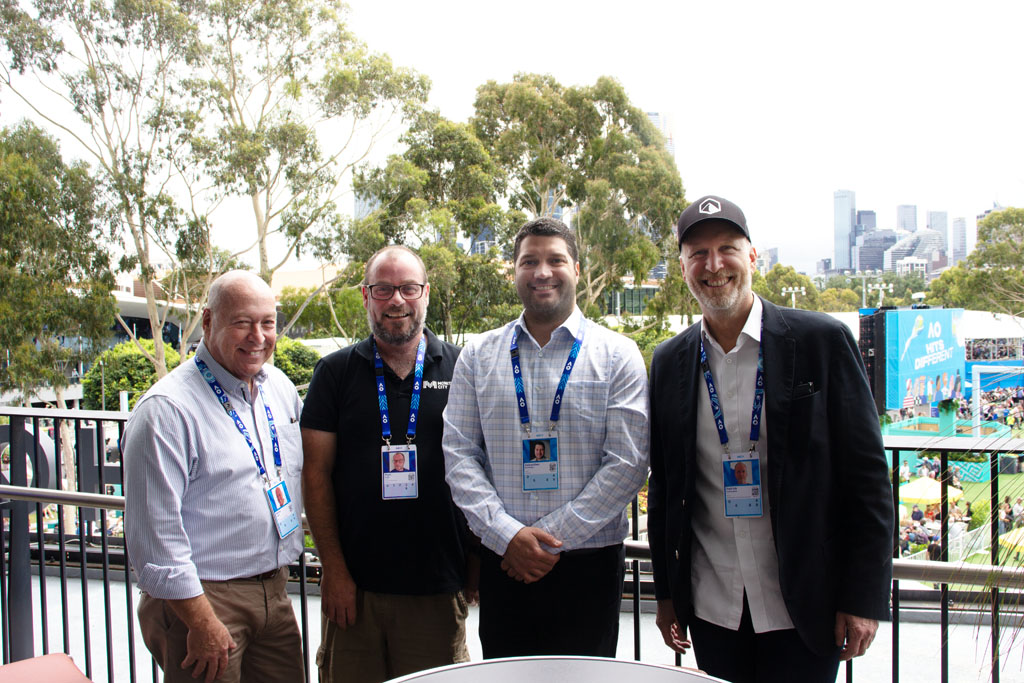
Machar Reid, Head of Innovation at Tennis Australia commented; “We believe audio is a critical part of the fan experience and often under-served. It’s ripe for innovation. DVOX’s ultra-low latency tech enabled us to take the really important step of offering real-time broadcast commentary to fans in-stadium in real-time.”
Sebastien Boulanger, president of DVOX, is an electrical engineer with a background in live events. His native Quebec, Canada, is bilingual by law; government communication must be in both French and English. Needing a good hardware solution for handling live translations at corporate and government functions, he looked around the market and found all existing solutions wanting. So he built his own.
The DVOX system is one of those incredibly simple solutions that’s really quite complicated under the hood, but you’d never know as the one deploying it, or as the end user. Ease of use and simplicity of delivery is its hallmark.
You simply choose which and how many of the four DVOX rack-mount units you need (they’re ranked by bandwidth and listener capacity), plug your mono or stereo analog audio inputs into the back, and the unit into the local LAN connected to your Wi-Fi network. There’s some configuration of the end-user GUI to be done on DVOX Manager, its software control and management platform, and then you’re live.
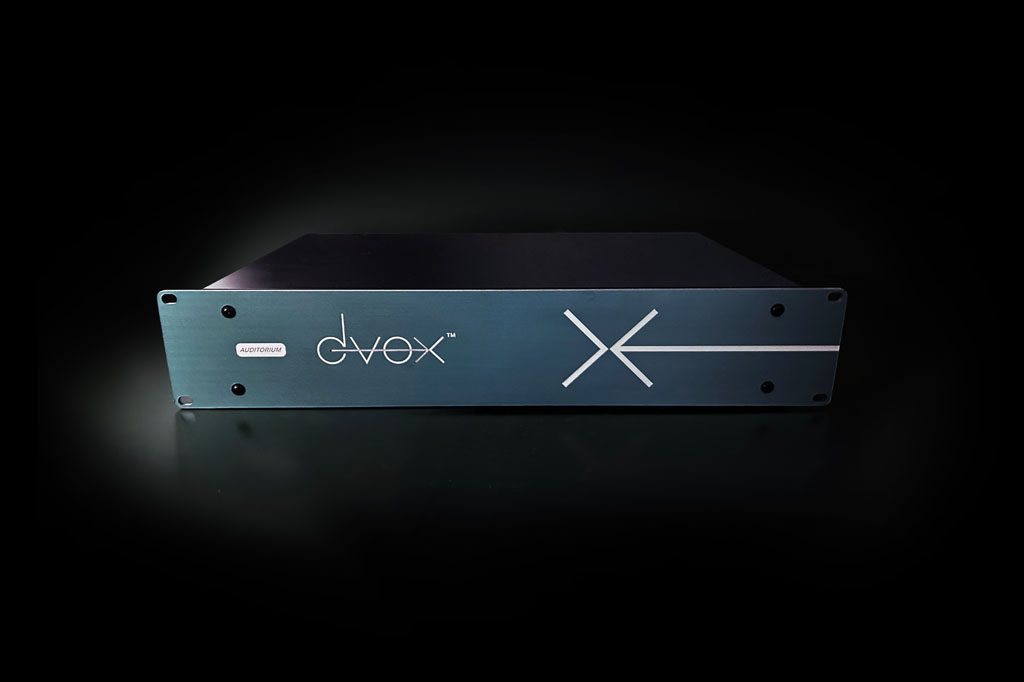
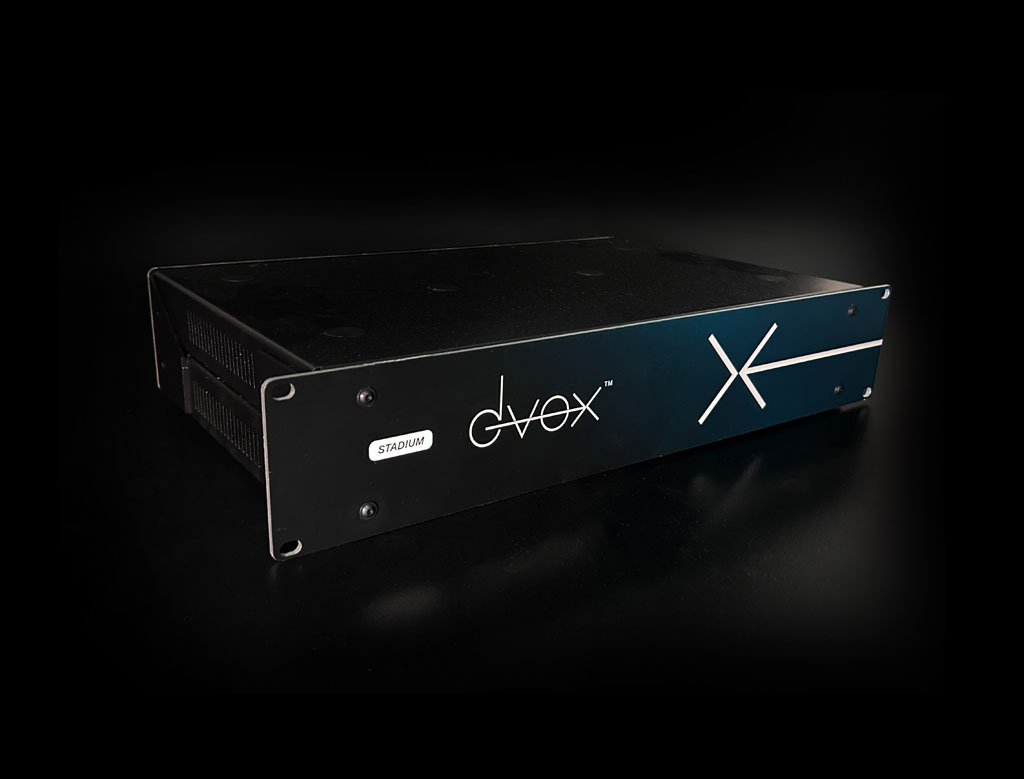
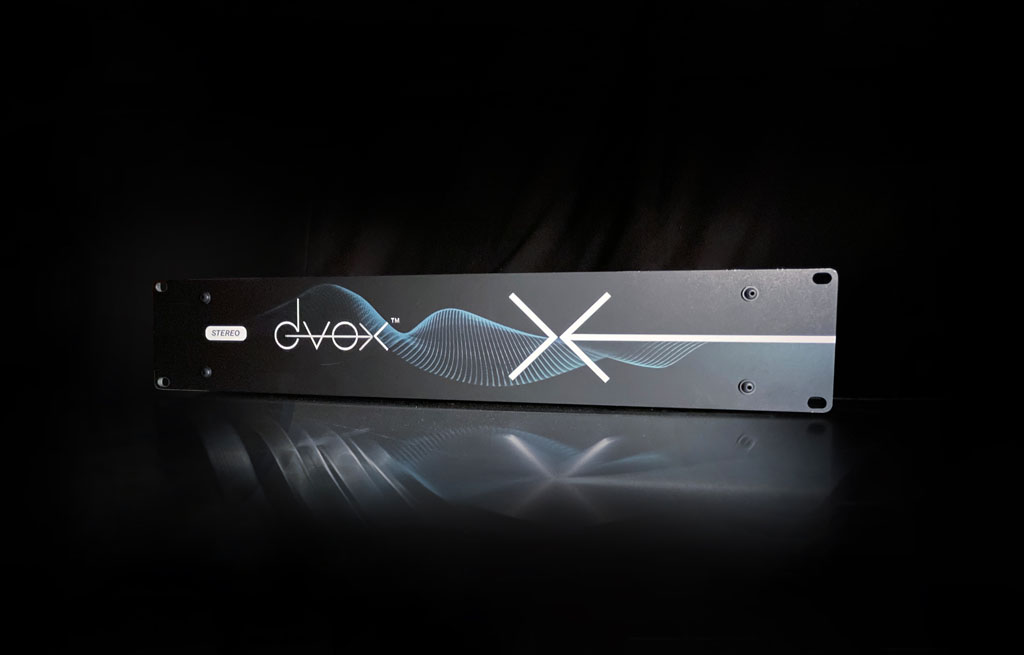
On the listener side, you take your device, which is usually any smartphone but can be anything with a browser, connect the local Wi-Fi, then either scan a QR code or go to the DVOX website in your browser. QR codes get you straight to your event audio page, and the website uses your GPS to figure out where you are. At the AO, I used the second method and had my phone streaming the audio from a nearby screen in seconds. What really struck me was the lack of latency. I was about 10 metres away from the screen and could hear (but not understand) the commentary coming from its speakers. The audio was arriving in my earphones significantly ahead of the audio arriving from the speakers.
The DVOX GUI setup for the AO allowed me to switch between seven different screen feeds, or tune into the AO podcast. In DVOX parlance, that’s eight streams. With the rack of DVOX hardware on site at the AO, each stream could be listened to by up to 25,000 people.
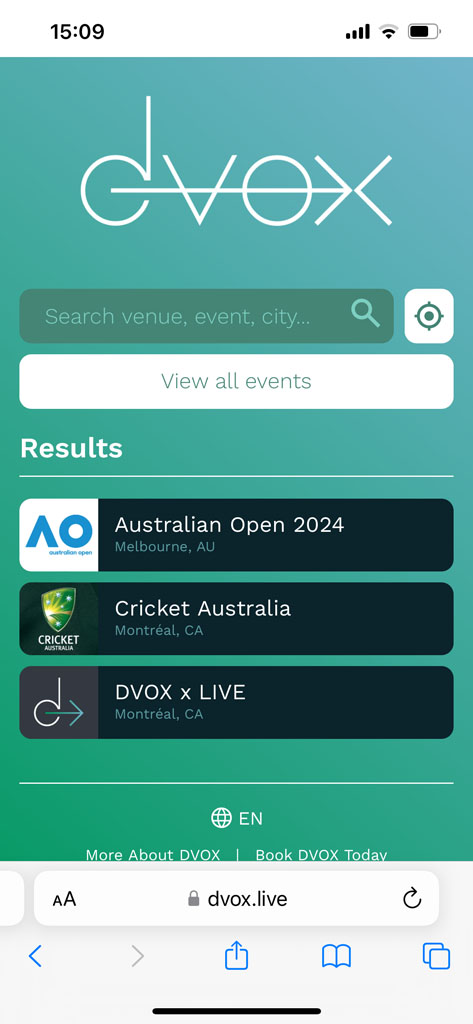
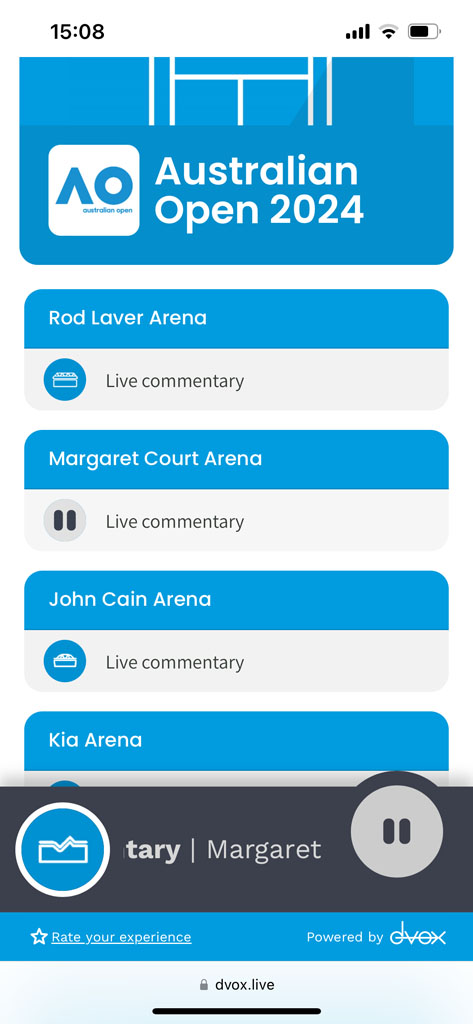
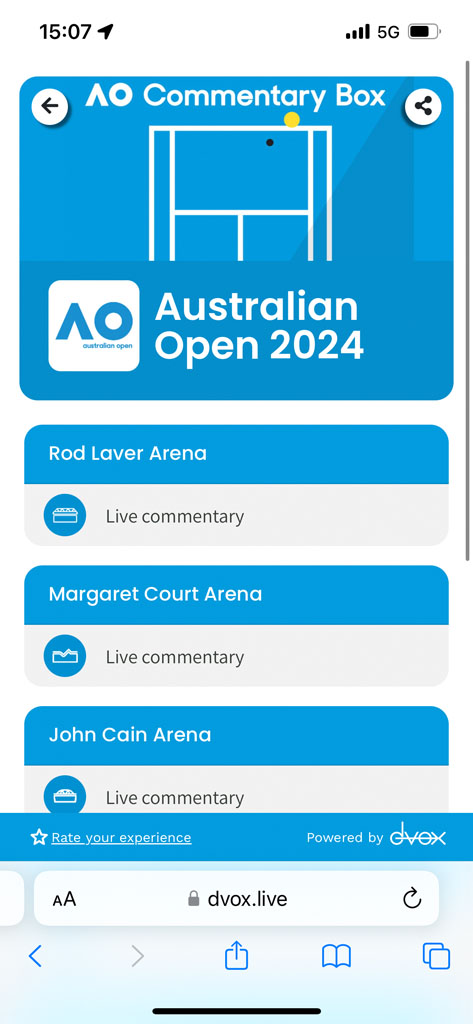
The great beauty of this solution is that it is browser based. Not only do you not have to install an app, but you can use any old smartphone that you have sitting in drawer to listen in. Being browser based also means your phone treats it as web audio and will happily lock the screen and turn dark while you’re listening, meaning your battery will last all day.
The applications for DVOX go way beyond the tennis. Every venue that needs to provide assisted listening solutions are a potential user. Every stadium, every sport, every theatre, convention centre, educational institution, art gallery – the potential is huge. Even DOOH (digital out-of-home) advertising – a QR code scan can give you audio from that big LED billboard in the city, or a smaller one in a shop. Airports. Projection mapping events. The audio mind boggles.
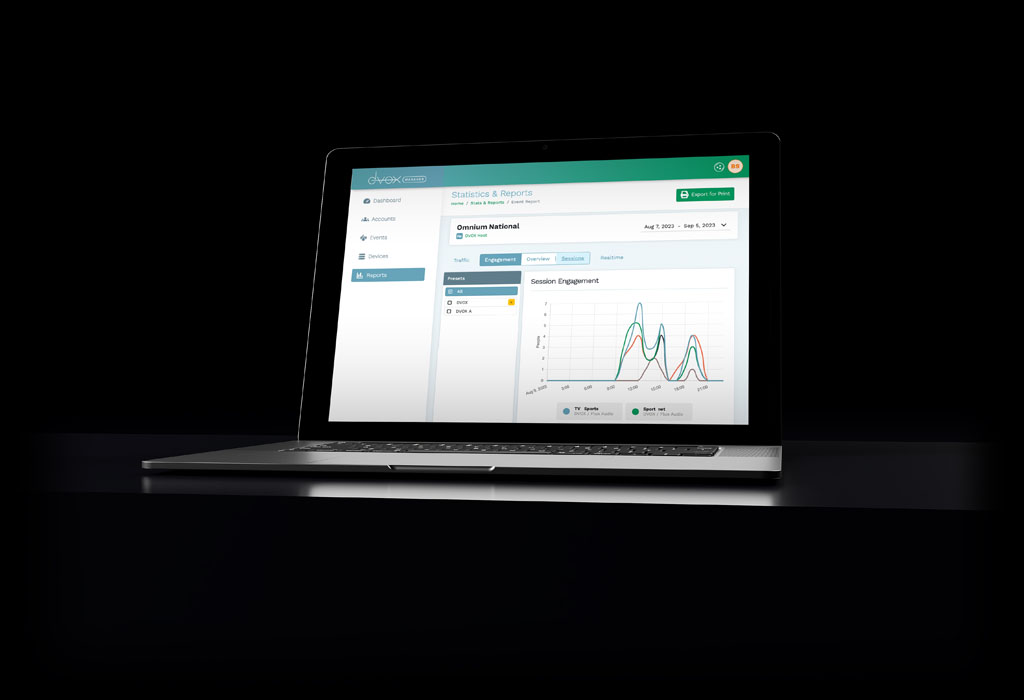
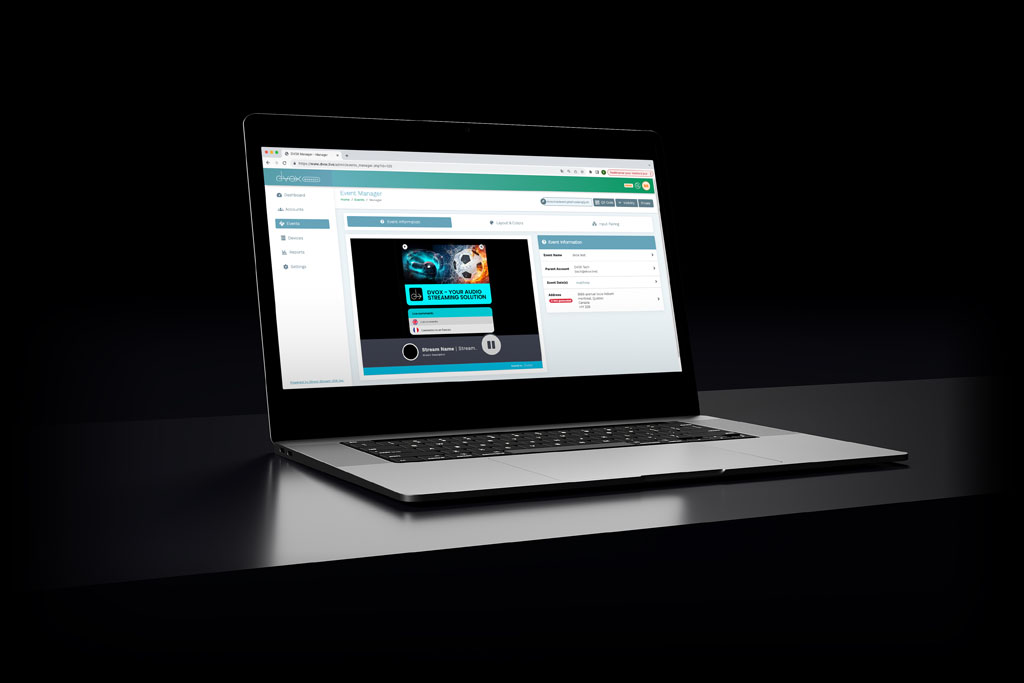
Sebastien Boulanger was onsite at the Open proudly showing off his baby and answering my questions. Newly minted local DVOX supplier and reseller Monitor City were also there, represented by co-owner Matt Dufty. As a production and technical management company, Monitor City have had a long association with Tennis Australia and the Open. It’s usually their loudspeakers you see cunningly hidden on the courts of the main arenas relaying the Chair Umpire’s calls.
Behind the scenes, they’re also supporting broadcasters with technical infrastructure, as Matt was that day.
“We met with Sebastien and DVOX a few months before the AO, after they’d won the AO StartUps funding,” explains Matt. “It’s a great audio solution for the Open. We’ve also decided to invest in systems for our own rental stock and become a reseller. We see huge potential, in the conferencing market and beyond. For example, you can have rooms with multiple presenters and no PA and the audience can decide who they want to listen to. And of course, there’s the whole assisted listening market.”
Knowing that IT managers generally get quite defensive about huge amounts of audio on their networks, I ask Sebastien how much admin and bandwidth management is needed to make something the size of the AO work. “It’s just audio; it’s almost nothing in terms of bandwidth,” he outlines. “The only real bit of back-end configuration is allowing our DVOX devices to stream across the network, which is just a simple matter of the admin granting permission to their MAC address. It takes five minutes.”
Another ingenious part of this system is there’s no cloud involvement, therefore the audio never physically leaves the area. I looked at Sebastien blankly when he said this, as I didn’t understand why that’s important. “The audio is Channel 9’s broadcast audio feed,” he told me. “Taking it out of the AO would be a breach of the broadcast rights contract.” Aha!
We had a (very quiet) look in the broadcast control room, where a single modest rack of DVOX units sat in the corner, taking their feeds straight from the broadcast audio console.
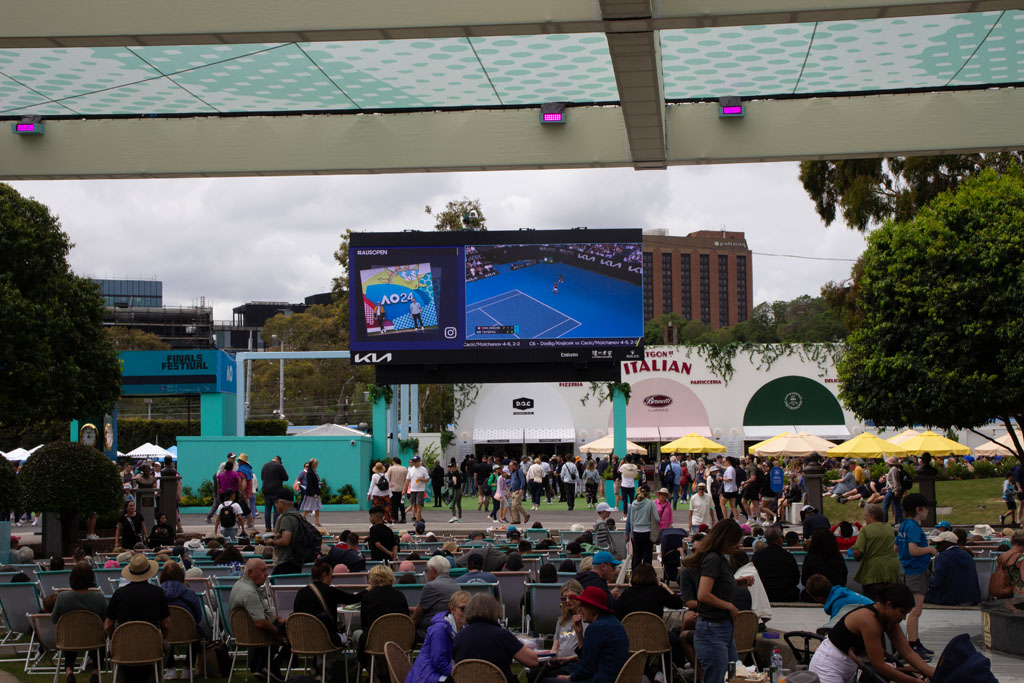
Considering 200,000 people could have been streaming on the other end, it was remarkably compact. Sebastien explained that they were taking in analog audio and converting it to browser-friendly digital running at 48kbps before it streamed out. The system can run up to 320kbps in stereo, if desired.
DVOX’s Pierre Angell (Vice President, Sports Division) and Patrick Prefontaine (Vice President, Business development) were flanking Sebastien at the Open, and were in Australia to take meetings with a galaxy of large potential clients, some of which were internationals representing globally significant sporting events and codes. Monitor City’s Matt Dufty was also accompanying the team on visits to prominent Melbourne potential customers. I think DVOX and Monitor City are going to be very busy in the near future.
The DVOX Ecosystem
Hardware
- There are four rack mount units, all the same 2RU in size; the Auditorium, Stereo, Arena and Stadium.
- Auditorium gives you four mono audio streams, a frequency range optimised for speech, and 1000 users per stream.
- Stereo gives you two stereo audio streams, full frequency range, and 500 users per stream.
- Arena gives you two mono audio streams with 5,000 users per stream.
- Stadium gives you two mono audio streams with up to 25,000 users per stream, though this can go higher.
Software
- DVOX Manager is the management web portal of the DVOX system. It provides your team with a full live audio streaming setup. The Manager allows you to
- create and customise your events from one central point of control. Features include event creation and management, event skin customisation, audio stream assignment, inventory administration, and key performance indicator reports.
- DVOX.LIVE is the end-user interface, accessed via browser and customised and configured in DVOX Manager.
Subscribe
Published monthly since 1991, our famous AV industry magazine is free for download or pay for print. Subscribers also receive CX News, our free weekly email with the latest industry news and jobs.





